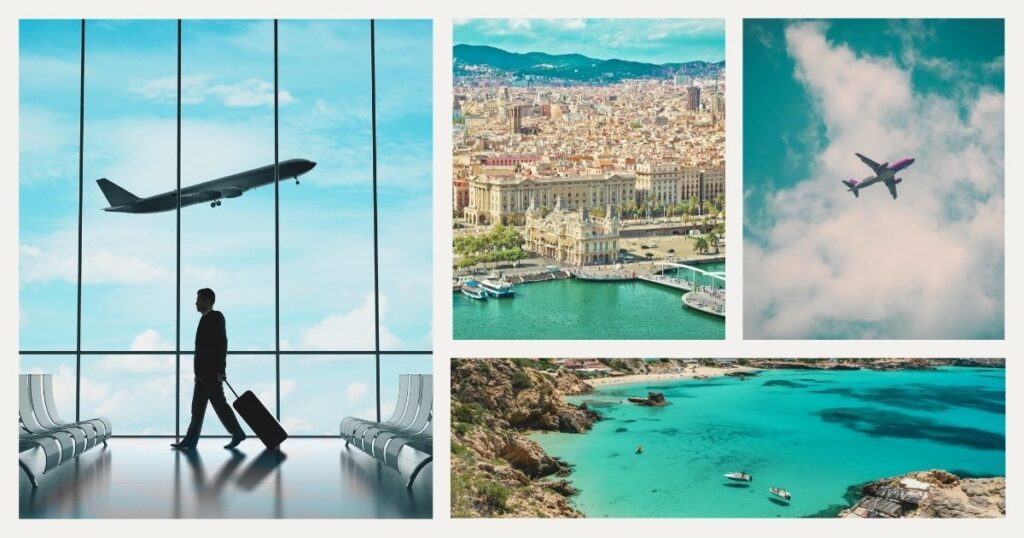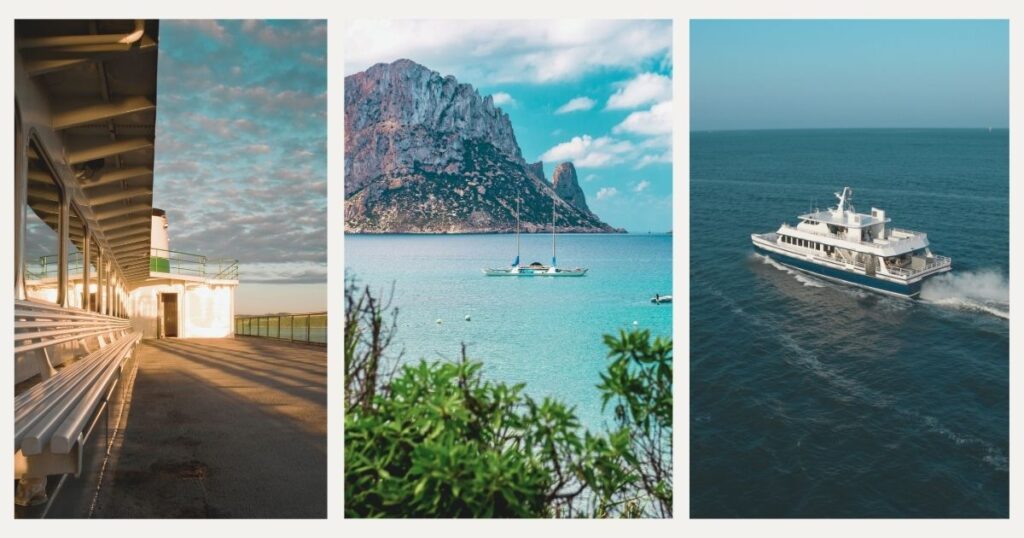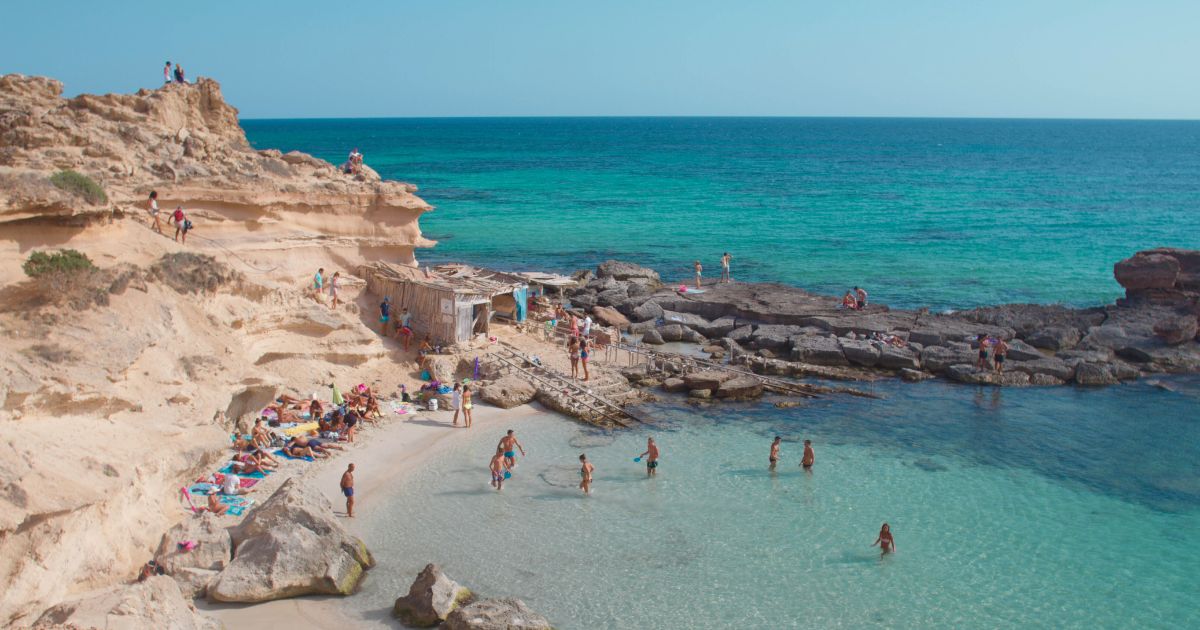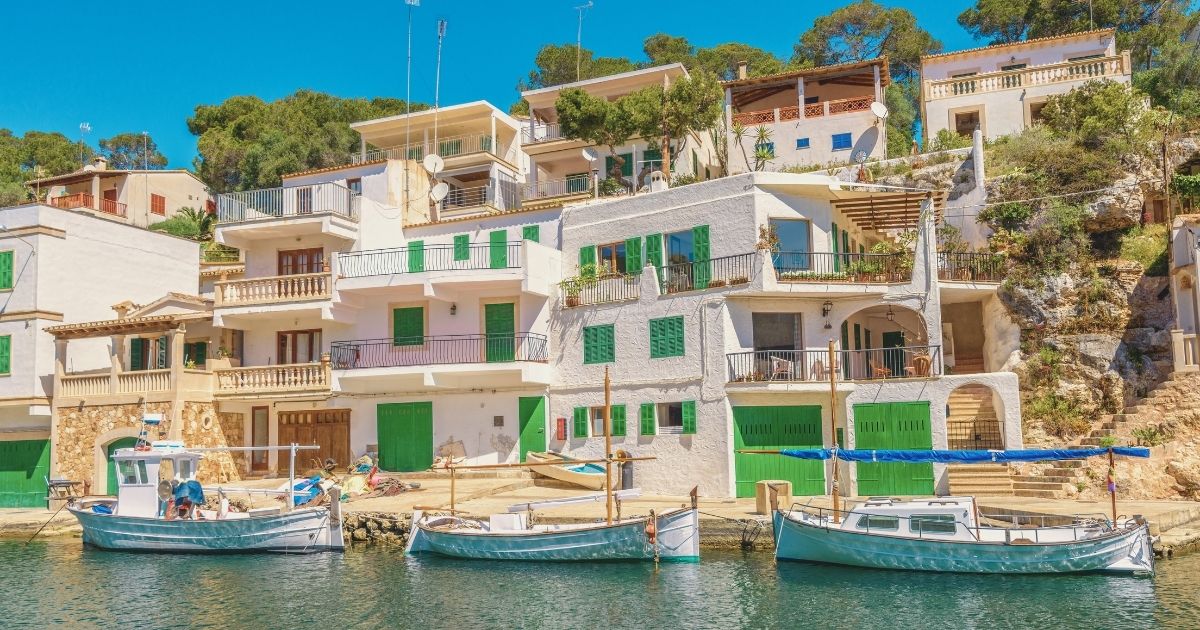Planning how to get to Ibiza from Barcelona opens up incredible opportunities for digital nomads seeking to combine productive work periods in Catalonia’s capital with relaxing island retreats in the Mediterranean’s most famous party destination. The journey offers multiple transportation options, each with distinct advantages for remote workers managing different schedules, budgets, and travel preferences.
Understanding the various methods for how to get to Ibiza from Barcelona helps nomads make informed decisions based on their specific needs, whether prioritizing speed for quick weekend getaways, budget considerations for extended stays, or comfort for working during transit.
Digital nomads frequently choose this route to escape Barcelona’s intense summer heat, attend Ibiza’s world-renowned festivals, or enjoy a change of scenery while maintaining remote work routines. This connection represents one of Spain’s most popular domestic travel routes, ensuring reliable service and competitive pricing year-round.
Flight options: the fastest way to get to Ibiza from Barcelona

Flying remains the most efficient and popular method for how to get to Ibiza from Barcelona, with multiple daily flights offering convenience, speed, and reliability that appeals to time-conscious digital nomads and weekend travelers seeking maximum island time.
Airlines and flight frequency
Vueling operates the most frequent service, offering up to 8 daily flights during peak summer and maintaining year-round connections. Iberia provides 3-4 daily flights with excellent punctuality, while Ryanair offers budget-friendly options with 2-3 daily departures.
Flight duration averages 1 hour and 20 minutes, making it possible to complete morning work sessions in Barcelona and arrive in Ibiza for afternoon activities. Summer schedules offer more flight times, while winter service reduces to essential connections.
🌟 Pro tip: book flights at least 3-4 weeks in advance for better pricing, especially during summer months when demand peaks. Tuesday and Wednesday departures typically offer the best rates for budget-conscious nomads.
Airport information and procedures
Barcelona El Prat Airport (BCN) sits 15 kilometers from the city center with excellent public transport connections. The airport offers reliable WiFi, charging stations, and coworking-friendly spaces for last-minute work sessions.
Ibiza Airport (IBZ) is just 7 kilometers from Ibiza Town, with regular bus connections and taxis providing easy island access. Both airports maintain efficient security procedures, though arriving 90 minutes before domestic flights ensures adequate time.
💡 Did you know? Ibiza Airport becomes one of Europe’s busiest during summer months, handling over 8 million passengers annually, with many flights connecting party-goers and digital nomads seeking work-life balance.
Ferry services: a scenic alternative route

Ferry travel offers a completely different experience for how to get to Ibiza from Barcelona, providing opportunities for onboard work, scenic Mediterranean views, and a more relaxed approach to island travel that many digital nomads find conducive to productivity and unwinding.
Ferry companies and schedules
Baleària operates the primary ferry service between Barcelona and Ibiza, offering both overnight and daytime crossings. The overnight ferry typically departs Barcelona at 11:30 PM and arrives in Ibiza at 7:30 AM, perfect for nomads wanting to sleep during transit.
Trasmediterránea provides additional seasonal service during peak summer months, with modern vessels featuring WiFi, restaurants, and comfortable seating areas ideal for remote work during the 8-hour journey.
Ferry schedules vary significantly by season, with daily summer departures reducing to 3-4 weekly services during winter months. Advanced booking becomes essential during festival periods and peak summer travel.
Onboard amenities for digital nomads
Modern ferries provide excellent facilities for remote workers, including reliable WiFi coverage, power outlets, and designated quiet zones perfect for video calls and focused work. Premium seating options offer more space and enhanced connectivity.
Overnight ferries feature private cabins with ensuite facilities, making them attractive for nomads who want to arrive refreshed. Restaurant facilities and outdoor deck spaces provide variety during the scenic Mediterranean crossing.
Cost comparison and budget planning

Understanding the financial implications of different transportation methods helps digital nomads make informed decisions about how to get to Ibiza from Barcelona while managing travel budgets effectively and maximizing value for their specific travel styles.
Flight pricing and seasonal variations
Flight costs fluctuate dramatically based on season and booking timing. Budget airlines like Ryanair offer fares starting from €30-50 during off-season, while peak summer rates can reach €150-300 for weekend departures during festival periods.
Vueling and Iberia typically price competitively when booked in advance, offering more reliable service and better baggage allowances. Festival periods create pricing spikes that can triple normal fare levels.
Ferry cost analysis
Ferry tickets range from €40-80 for standard seating, while private cabins cost €80-150 per person. Vehicle transportation adds €80-120, making ferries cost-effective for nomads planning extended stays with rental cars.
Ferries become particularly attractive when factoring in included baggage allowances and onboard amenities that airlines charge separately. Group bookings and advance purchase discounts can reduce costs significantly.
Hidden costs and additional expenses
Flight travel requires factoring in airport transfer costs (€5-35 each way), potential baggage fees (€15-50), and food expenses. Ferry travel includes most amenities in base pricing, though premium WiFi and cabin upgrades create additional costs.
Travel timing and seasonal considerations

Choosing optimal timing for how to get to Ibiza from Barcelona significantly impacts pricing, availability, weather conditions, and overall island experience, making seasonal planning essential for successful nomadic adventures.
Peak season travel (June-September)
Summer represents Ibiza’s busiest period, with maximum transportation frequency but the highest prices and crowded conditions. The island’s legendary party scene reaches full intensity, creating vibrant networking opportunities but potential productivity challenges.
Transportation availability peaks during summer, with multiple daily flights and frequent ferries providing maximum flexibility. However, advance booking becomes essential as services often sell out during festival weekends.
Shoulder season advantages (April-May, October)
Shoulder seasons offer an excellent balance between good weather, reasonable prices, and reduced crowds while maintaining adequate transportation options. Flight and ferry schedules operate at near-peak frequency with significantly lower pricing.
The weather remains pleasant for outdoor work and beach activities, while accommodation costs drop substantially. The island maintains its character while offering more authentic local experiences.
Off-season considerations (November-March)
Winter travel offers significant cost savings but requires accepting reduced transportation frequency and weather uncertainties. Ferry services are reduced to 2-3 weekly departures while flight options decrease substantially.
The island’s quieter winter character appeals to nomads seeking focused work periods and budget-friendly extended stays, though some businesses operate reduced hours.
Digital nomad connectivity and logistics

Maintaining reliable internet connectivity and managing work responsibilities while traveling represent crucial considerations for how to get to Ibiza from Barcelona successfully while preserving professional productivity and client relationships.
Internet access during transit
Barcelona El Prat Airport provides comprehensive free WiFi throughout all terminals, enabling last-minute work completion and travel coordination. Ferry WiFi varies by vessel, with basic internet typically sufficient for email but potentially inadequate for video calls.
🌟 Pro tip: maintain seamless connectivity throughout your journey with Holafly’s Spain data plans, ensuring reliable internet access during transit, airport layovers, and immediate arrival periods before establishing local connectivity.
Equipment transportation considerations
Airlines typically allow standard carry-on luggage suitable for most nomad setups. Budget carriers charge for checked baggage, while full-service airlines often include one checked bag. Ferry travel offers generous baggage allowances without weight restrictions.
Work schedule coordination
Flight timing allows same-day travel with minimal schedule disruption, enabling morning Barcelona work sessions followed by afternoon Ibiza arrival. Ferry overnight options can maximize productivity by working normal hours, sleeping during transit, and arriving refreshed.
Final thoughts
Mastering how to get to Ibiza from Barcelona opens up incredible opportunities for digital nomads seeking to blend urban productivity with island relaxation in two of Spain’s most dynamic destinations. Whether choosing quick flights for weekend escapes or scenic ferry journeys for extended retreats, the route offers flexibility that accommodates diverse nomadic lifestyles.
The key to successful travel lies in understanding seasonal variations, booking strategies, and transportation options that align with your work schedule, budget constraints, and island objectives. Both destinations offer excellent infrastructure for remote work, making transitions seamless for productivity-focused nomads.
For comprehensive guidance on optimizing your Spanish island-hopping adventure, explore our detailed Spain travel guide for insights on accommodations, coworking spaces, and lifestyle strategies that maximize your Mediterranean remote work experience.
Ready to discover the perfect balance between Barcelona’s urban energy and Ibiza’s island magic? The journey between these incredible Spanish destinations offers digital nomads unlimited opportunities for professional growth and lifestyle enhancement. Let Nomada help you plan the perfect Mediterranean work-travel experience that combines productivity with unforgettable memories.
Start planning your Barcelona to Ibiza adventure today! 🏝️
Frequently asked questions
Flying is definitely the fastest option, taking approximately 1 hour and 20 minutes with multiple daily flights available through Vueling, Iberia, and Ryanair. During peak summer season, you’ll find 8-10 daily flight options, while off-season reduces to 3-4 daily departures. Total travel time including airport procedures typically ranges from 3-4 hours door-to-door.
Costs vary significantly by season and booking timing. Budget flights range from €30-50 off-season to €150-300 during peak summer and festival periods. Ferry tickets cost €40-80 for standard seating and €80-150 for private cabins. Factor in additional expenses like airport transfers (€5-35), baggage fees for budget airlines, and ground transportation in Ibiza.
Yes, ferries offer excellent value for nomads with extensive equipment, providing generous baggage allowances without weight restrictions or additional fees. The 8-hour journey includes WiFi, power outlets, and quiet work areas, making it productive transit time. Overnight ferries with private cabins are particularly appealing for arriving refreshed and ready for island productivity.
Shoulder seasons (April-May, October) offer optimal balance of good weather, reasonable prices, and adequate transportation options. Peak summer provides maximum flight frequency but highest costs and crowds. Winter offers significant savings but reduced schedules and weather uncertainties that may impact outdoor work plans and island exploration.
Advanced booking is highly recommended, especially during summer months, festival periods, and holiday weekends when services often sell out. Booking 3-4 weeks ahead typically provides better pricing for flights, while ferry reservations become essential during peak periods. Last-minute travel is possible but expensive and potentially unreliable during busy seasons.
Modern ferries provide excellent facilities for remote work, including WiFi coverage, power outlets, and designated quiet zones suitable for video calls and focused work sessions. The 8-hour journey offers substantial productivity time, though connectivity quality may vary by location and vessel. Consider mobile data backup for critical connectivity requirements during transit.



